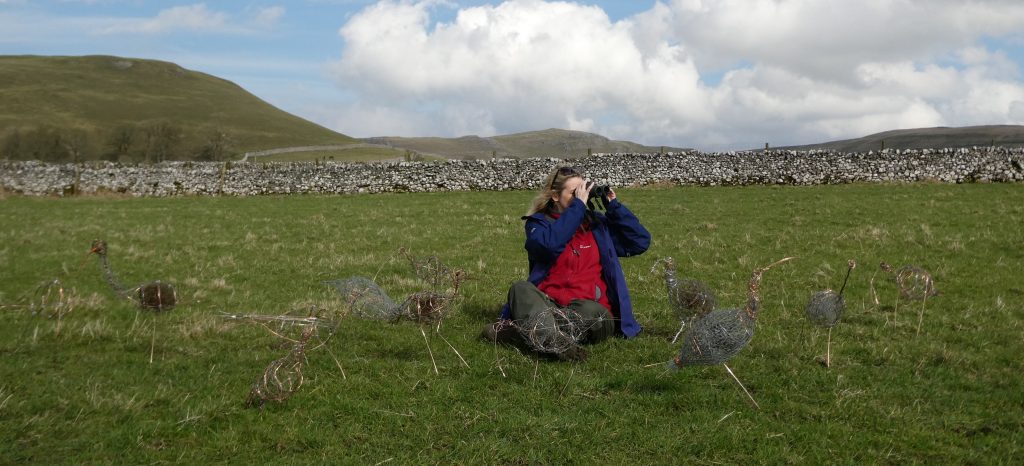In the last 25 years alone (1995-2020) the UK has lost nearly 50% of breeding curlew – with Wales, Northern Ireland and southern lowland England now having almost no breeding curlew left at all. Since the UK is home to about 25% of the entire population of Eurasian curlew, any decline threatens curlew globally, which has put them on the ‘red-list’ of birds facing extinction and makes them one of the most pressing bird conservation priorities in the UK.
“The reasons we have lost so many curlew are complex,” said Ann Shadrake, our executive director. “Curlew and other big wading birds need large undisturbed spaces with the right mix of grassland, moorland and wetter areas. Changes such as development, more people visiting the countryside, a shift to early cuts for silage and an increase in some natural predators have all added pressure.”
Curlew tracking indicates that only about one in every four breeding pairs manage to raise their chicks to maturity each year, a mathematical equation which basically means that not enough young birds are surviving to take the place of their parents and grandparents.
“Just to stop the dire decline in the UK we need 10,000 more curlew chicks to survive each year. Without concerted efforts, even within our own lifetime, we could see curlew become extinct in the UK – so we must take action now.”
To help raise awareness of the critically endangered curlew, we are hosting a one-day outdoor installation event on Sunday 14 April at Malham. Up to 20 life-size curlew sculptures made from foraged and recycled wire by our team of Creative Campaigners (aged 20-30) − under the expert guidance of Dales based artist Lesley Knevitt − will be placed in the field alongside the pathway that links Malham village to Janet’s Foss (by kind agreement of farmers Neil Heseltine and Leigh Weston). Ahead of World Curlew Day on 21 April, our event aims to give members of the public the chance to discover more about this endangered bird and the practical things we can all do to help improve their survival rate. There will also be a short online quiz (with the chance of winning a year’s free membership to Friends of the Dales) and downloadable instructions on how to make your own wire or origami curlew.
Event helpers will also be able to advise people about the ways in which they can volunteer to help curlew directly, since more landowners are now working with conservation charities like RSPB, BTO, and Wildlife Trust who train volunteers to monitor and protect nests.
Photo: Farmer Leigh Weston watching real curlew amongst the sculptures at Malham by Ann Shadrake
